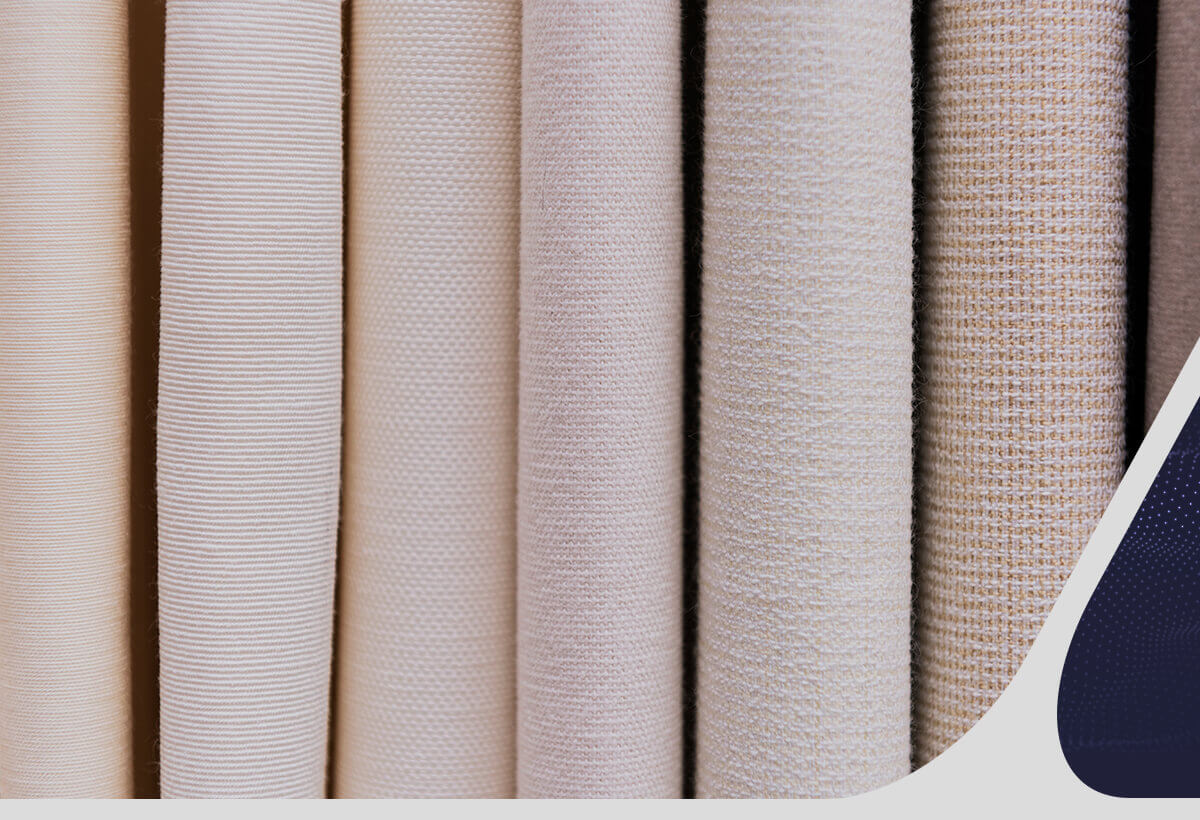When you touch a textile material, you feel its texture, weight, and fit. But have you ever wondered what defines these characteristics? The answer lies in the fabric grammage.
This factor, often underestimated, influences everything from the choice of material to production efficiency and the final cost of the piece.
With this in mind, let’s explore this concept and show how it directly impacts manufacturing. Read on to find out!
Understand the concept of fabric grammage
According to ABIT, fabric grammage is the “mass ratio per unit area, in grams per square meter” (g/m²). This description follows as a reference to ABNT NBR 10591 (Textile materials).
In other words, fabric grammage is simply a measure of how heavy the fabric is. This information is responsible for determining the density of the material, which can directly influence resistance, thickness, fit, and comfort.
To determine the average grammage of each fabric, check out these examples cited by SEBRAE:
- Heavy denim: grammage 260 g/m²;
- Light denim: grammage208 g/m²;
- Mixed denim: grammage224/m²;
- Traditional shirt: grammage 122 g/m²;
- Blend shirt: grammage 155 g/m²;
- Canvas: grammage 175 g/m².
The examples compiled in an IFRN article show that the grammage of the fabrics can vary significantly, ranging from 82 g/m² to 320 g/m².
This highlights the wide variety available on the market, allowing you to select the most appropriate fabric for each application.
In any case, they can be separated into different classification groups, such as:
- Light: less than 130 g/m²;
- Averages: between 130 g/m² and 220 g/m²;
- Heavy: greater than 220 g/m².
In other words, the higher the fabric grammage, the denser and heavier the fabric will be, as it will have a large number of threads.
High grammage fabrics tend to be more structured and resistant. Those with a lower grammage are lighter, more flexible, and suitable for applications that require fluidity.
>> Read also: What is flat fabric?
How is fabric grammage calculated?
To measure fabric grammage, you will need a sample of the chosen piece. To simplify the calculation, cut out a 10 cm x 10 cm sample (0.01 m²).
Then weigh this piece of fabric on a precision scale, which will measure the grammage in grams.
Finally, simply convert the value shown into g/m². To do this, use the formula: Grammage = Weight of sample (g) / Area of sample (m²).
But here’s a tip! Some innovative, technological and modern equipment already makes this process more agile.
The REV170 Inspection Machine, for example, collects essential data such as meters of floor space, grammage, and width. This innovative tool automates the inspection process, ensuring greater efficiency compared to traditional methods.
>> Read also: How to improve the fabric review stage?
How does this choice affect the results of the manufacturing processes?

Now that you know what fabric grammage is and how to calculate it, it’s time to understand its importance in the quality of clothing manufacturing processes.
After all, the choice of the ideal fabric for production must take into account its grammage. This factor directly influences handling and performance in the production stages.
| Lightweight fabrics | Heavyweight fabrics |
| They are more delicate and can shred or deform easily. | They tend to offer greater resistance. |
| They require more care during cutting and sewing. | They make cutting difficult, requiring specific equipment for finishing. |
| Light and fluid fit. | Greater durability of the fabric. |
| They have a higher yield. | They need more fabric to cover a larger area. |
Not to mention that the higher the grammage, the longer the fabric will last. On the other hand, the smaller it is, the lighter and more fluid the fit will be.
These factors directly impact the quality of the final textile product, influencing its functionality, comfort and appearance.
However, with the proper operational structure and clearly defined planning, these challenges and characteristics can be overcome and balanced.
Understanding the characteristics of each grammage is essential for ensuring a strategic and efficient choice that aligns with the industry’s objectives.
>> Read also: Clothing in Industry 4.0: what is the real productive gain?
Relationship between fabric grammage and yield
In addition to the aspects mentioned above, it is essential to consider that the weight of the fabric directly influences its performance. In other words, the quantity needed to make a piece.
This means that together they impact both the cost and efficiency of production. It is no coincidence that grammage is a key factor in the formulas used to calculate the linear and technical performance of the fabric.
Keeping this information in mind is extremely important for optimizing resources and ensuring savings. After all, from them it will be possible to acquire the exact amount of fabric needed, avoiding textile waste.
Not to mention, of course, that it helps with efficient stock management and quality control throughout the entire production process.
Fabric grammage is an essential factor in the quality, performance, and efficiency of textile manufacturing. Understanding their influence on handling, cutting, and fitting allows for a more strategic choice of materials, ensuring better results.
If you are interested in learning about cost-reduction strategies and best practices for textile production, download our exclusive eBook now and discover the role of technology in this process!


